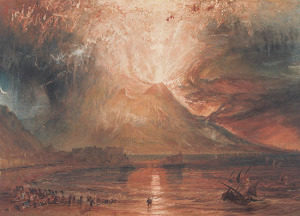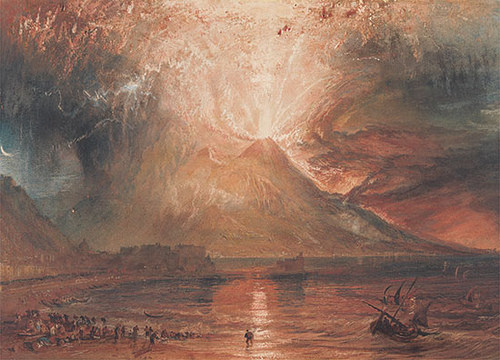
A study* suggests that lead isotopes can reveal the history of ancient Roman water distribution systems. The impact of the Vesuvius volcanic eruption in AD 79 on the water supply of Naples and other nearby cities has been a matter of debate. Hugo Delile and colleagues measured lead isotopic compositions of a well-dated sedimentary sequence from the excavated ancient harbor of Naples. The isotopic composition of leachates from the harbor sediments differed from those of lead native to the region, suggesting contamination from imported lead used in the ancient plumbing. The authors observed an abrupt change in isotopic composition in a sediment layer above that associated with the AD 79 eruption. This shift was estimated to postdate the eruption by approximately 15 years and suggests a switch to different pipes. The authors report that the Vesuvius eruption likely damaged the Neapolitan water supply network; nevertheless, the network continued to be used for another decade and a half while a new network was being constructed. Lead isotopes from later sediments suggested the steady expansion of the city’s water supply system until the early fifth century AD, when multiple factors, such as invasions, natural disasters, and local administrative and economic collapse, led to its overall decline. The isotopic record further shows the ebb and flow of Neapolitan urban sprawl throughout the fifth and sixth centuries AD, according to the authors.
____________________________________________________
Painting by Joseph Mallord William Turner (between 1817 and 1820) Vesuvius in Eruption, watercolor. Image courtesy of Yale Center for British Art.
___________________________________________________
Source: Proceedings of the National Academy of Sciences (PNAS) press release.
*“A lead isotope perspective on urban development in ancient Naples,” by Hugo Delile et al
___________________________________________________

______________________________________________
Travel and learn with Far Horizons.
____________________________________________
This richly illustrated issue includes the following stories: Recent findings shedding new light on the whereabouts of the remains of Philip of Macedon, father of Alexander the Great; how an archaeologist-sculptor is bringing bones of the dead back to life; archaeologists uncovering town life at the dawn of civilization; an exclusive interview with internationally acclaimed archaeologist James M. Adovasio about what makes the Meadowcroft Rockshelter prominent in the ongoing search for the first Americans; what archaeologists are finding at the site of the ancient city of Gath, the home town of the biblical Philistine giant, Goliath; and how scientists are redrawing the picture of human evolution in Europe. Find it on Amazon.com.









